January 7, 2015
Roxborough State Park
Before we travelled to Colorado this past summer, I asked one of my co-workers, who happens to be a native, to recommend some of his favorite places to visit. Consulting with our hosts, the Sherpa Girls, we opted for Roxborough State Park just south of Denver, and it was a good choice. The park is sort of indicative of the state as a whole, in that it is a mix of prairie and mountains. You enter Roxborough through the prairie, and as dramatic as mountains are, I also appreciate these wide exposed places, with their broad skies and bending grasses.
With the prairie at your back, you enter the rest of the park through a cleft in the rock.
Once inside, ancient red rocks reveal themselves. These are part of the same formation that form Garden of the Gods in Colorado Springs, and Red Rocks Park just west of Denver, only Roxborough lacks the crowds of these better known places.
The rains had been more generous than normal, benefitting the grasses and wildflowers, including a few non-native interlopers.
I think I could live here, even for just one summer afternoon.
Subscribe to:
Post Comments (Atom)
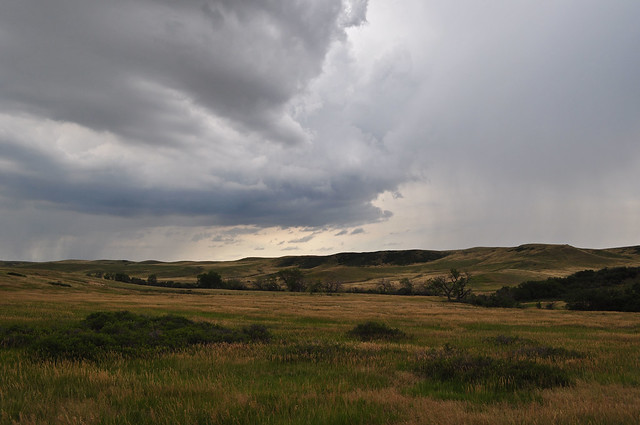
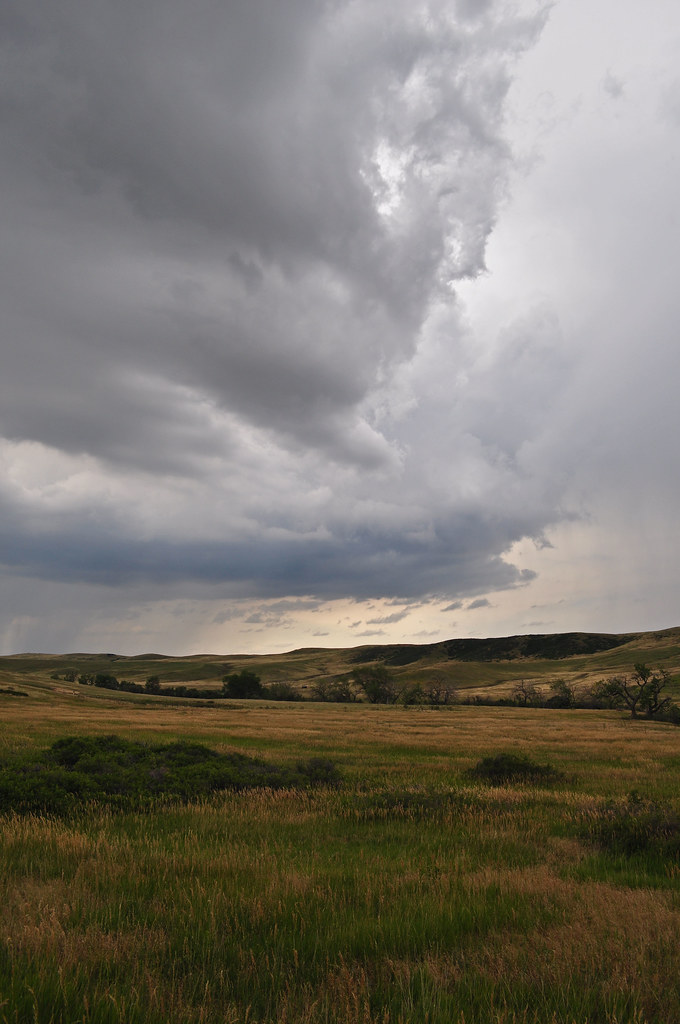

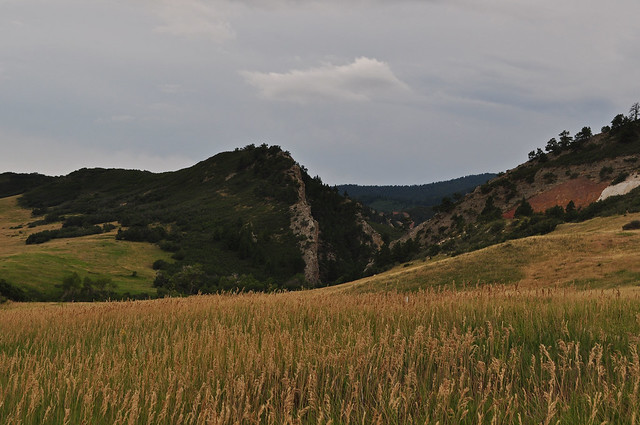


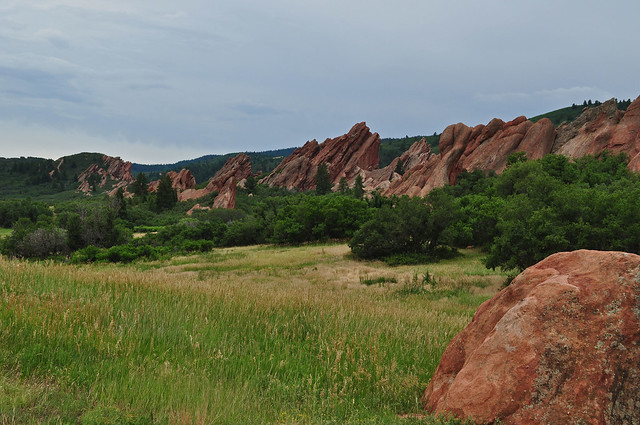



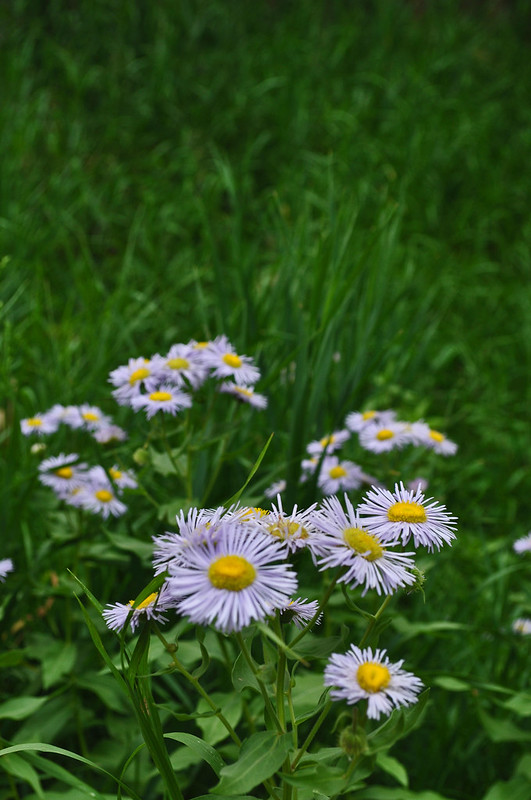
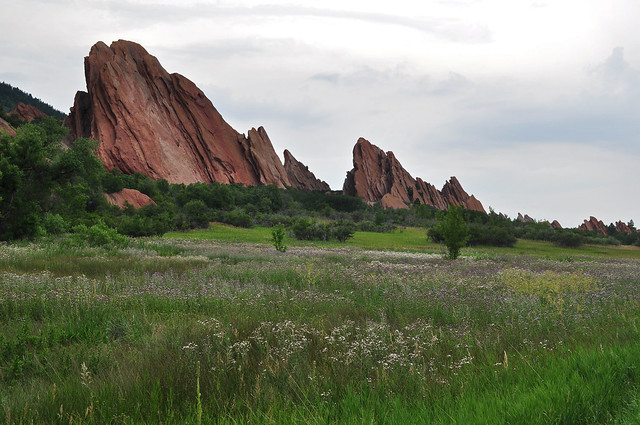




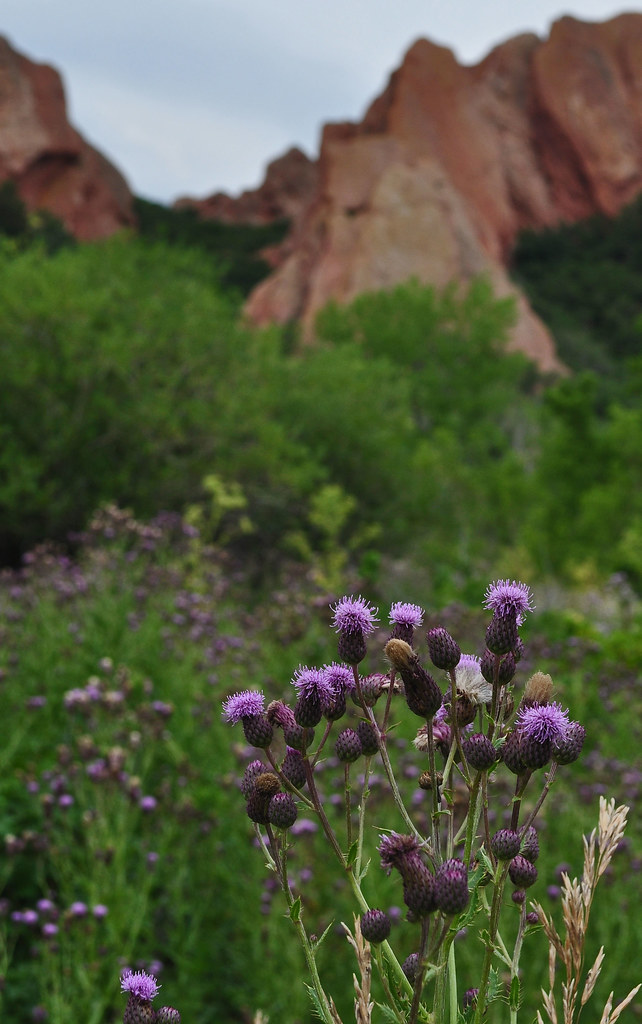

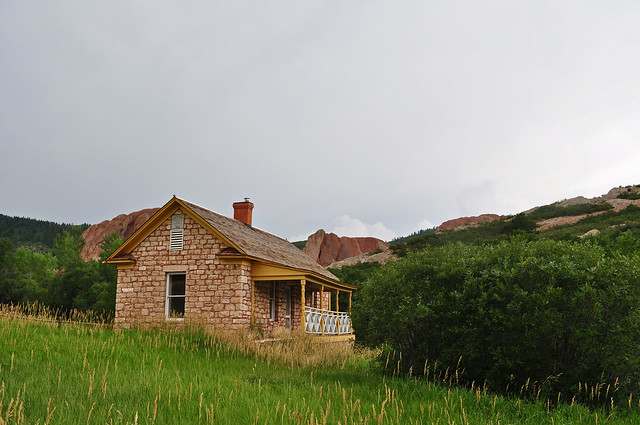



Extraordinary.
ReplyDeleteYes it was, and my photos don't do it justice.
DeleteJust beautiful! Love the mountains, prairies and Monarda fistulosa. Any idea if it will grow well here?
ReplyDeleteMeg is should grow here, but needs drier conditions than our more common Monarda didyma.
DeleteMagnificent vistas. Cloud formations add so much to the photos.
ReplyDeleteI was staring at the sky as much as I was the land. Over the prairie the skies were very dramatic and you could see bands of rain. In the red rock areas the sky was just a flat washed out gray.
DeleteWow, that is just gorgeous. I've been to Colorado twice, once for a conference in Estes Park. The other time was on vacation, but we only went to Rocky Mountain National Park before heading to Wyoming. Would have loved to see this. Wonderful rock formations, and all the wildflowers.
ReplyDeleteJason, we spent several days in RMNP and absolutely loved it. It went on one particular hike there that was probably the best of my life.
DeleteThe red rocks bursting out of the earth make me think of the enormous force that pushed them up and the upheaval of the planet at the time they were created. Such a contrast with the calm prairie. The stone cabin is enticing to me as well. Is it a visitor's center?
ReplyDeleteChavliness, the rocks are incredibly old and were once horizontal. Reading about the formations they were referred to as the proto-Rockies, so they were older. There is a visitors center, but the building I showed is the original homestead.
DeleteWhat a stunning park Les. Love the scenery.
ReplyDeleteWhat do you mean in the U.S. when you say some one is a "Native" ? Here it would mean that someone was native to the area. i.e. born and raised somewhere. Otherwise we would say "Aboriginal" or "First Nations" ...
Sybil, our definition for "native" is the same, born and raised in a particular place. I have always liked that Canada and Canadians use the term "First Nations", it is a term of elevation. Many people in the states still use the term "Indian", but our politically correct term is now "native American", but I think that term is confusing.
DeleteGreat images! I love the picture showing both red and white rocks - good contrast!
ReplyDeleteIs that a purple Monarda growing wild (#7 from the bottom)?
Yes that is Monarda fistulosa. I took many photos of the two thistles because they were so beautiful and prolific, but when I was trying to ID them at home, found out they are noxious invasives.
DeleteThose rock formations are amazing.
ReplyDeleteYes it was amazing, and it surprised me that the place is free, and there were so few people there. We practically had the park to ourselves.
DeleteWhat a gorgeous landscape! I love the contrast between the flowing grasslands and the jagged red cliffs. Your photos capture the breathtaking scope of it. I've only seen Colorado in winter.
ReplyDeleteSarah, I as really struck by those fields of grain as well, growing right up to the rock formations. I have only seen Colorado in summer, and while I am sure it is dramatic in the winter, I am no fan of cold weather.
DeleteMarvelous! It pays to ask locals where the good spots are. If the place is more beautiful than your photos, it is beautiful indeed.
ReplyDeleteWhat a great place, you have given me itchy feet! I've only ever seen the Rockies in snow, I love the jagged red rock, such a contrast to the smoother arches of red in Idaho.
ReplyDeleteOk, another spot for my camera to go and follow in your footsteps. Nicely done...
ReplyDelete